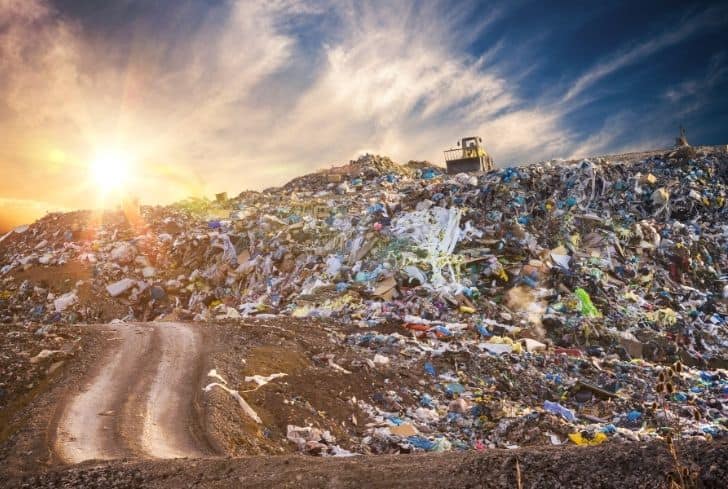What is the Impact of Land Pollution on Well-being?
Introduction
Land pollution is a type of pollution that occurs when the land is harmed in some way. Land pollution can be caused by human activities, such as waste disposal and runoff, or natural events like floods and earthquakes. The negative impact on people’s well-being can be caused by air toxicities, water contamination, soil degradation, and ecosystem degradation caused by land pollution. Skip hire Manchester helps to reduce land pollution by clearing large amounts of garbage.
Land pollution has a lot of negative impacts on people’s well-being

Land pollution has a lot of negative impact on people’s well-being. It is caused by human activities, such as industrialization and urbanisation. The negative effects of land pollution on health include air pollution, water contamination, soil degradation, and ecosystem damage. The main cause of land pollution is the uncontrolled discharge of wastes into natural sources such as rivers and oceans, which directly affects people’s health. For example, when harmful metals are discharged into rivers, they become polluted with toxic substances that may be ingested by humans through drinking water or fish consumption.
Health Impacts
Land pollution can cause health problems in many ways. For example, air pollution and soil contamination may lead to asthma attacks, chronic bronchitis, or lung cancer. Water pollution from pesticides or other chemicals can cause gastrointestinal illness and reproductive disorders.
Air Toxicities
Air toxicities are one of the most common types of land pollution. It’s the second leading cause of death in the US, and it kills more than 3 million people every year. Air toxicities can cause lung cancer, heart disease, asthma, respiratory problems, and birth defects. They also cause eye irritation, headaches, and coughing fits.
Water Contamination
Water pollution is one of the most serious problems facing our planet, and it can have an impact on your well-being. The pollution comes from many different sources, including industrial and agricultural activities, mining operations, waste disposal sites like landfills and septic systems, urban runoff, and storm sewers—even some personal care products (like toothpaste) contain chemicals that get washed into the water supply. Waterborne illness is a major health threat around the world. According to the World Health Organization (WHO), more than 2 billion people lack access to clean drinking water. This situation contributes directly or indirectly to over 1 million deaths each year.
Soil Degradation
Soil degradation is the process of reduction in soil quality, which may include the loss of soil organic matter and biota. The leaching of nutrients and other chemical constituents, or a combination of these. It is one form of land degradation. Soil erosion can be caused by water or wind erosion including slope instability and mass movements/landslides. Which occur when natural processes are overwhelmed by human activities such as farming or deforestation. Direct human intervention into natural ecosystems through construction work. Overgrazing by domestic livestock; forestry practices like clearing forests for timber production. Overfishing causing siltation from rivers draining into oceans via deltas etc. Mining operations resulting in runoff flowing into nearby bodies of water causing pollution. It meets up with fresh water before entering estuaries or oceans eases us into this section. By introducing an element we already know about: erosion caused by water flowing off mountain.
Ecosystem Degradation
As our environment deteriorates, the quality of life for many people declines. Land pollution can lead to ecosystem degradation, which affects everything from air quality to water and soil. When ecosystems are degraded, they don’t function properly because they are not able to sustain themselves. This can cause problems such as climate change and poor air quality that have a direct impact on human health. Examples of ecosystem degradation include:
- Soil erosion caused by over farming
- Pollution from industrial development or coal mining that contaminates nearby lakes or rivers
Know about Land Pollution
The land is the Earth’s crust, together with its surface and atmosphere, viewed as a unit. Land includes all areas of geographical interest to humans, such as fields, rivers, forests, and mountains. It also includes man made structures on the surface of the Earth or on the ground that are not artificial satellites like mobile phones or radio stations. The world’s population living in urban environments grew by about 2.2% per year from 1950 to 2000. That growth would have been even greater if it wasn’t for a decline in productivity caused by the pollution of land and water resources.
Land pollution is any process that adds harmful substances to the land or an ecosystem so as to cause damage. It also cause harm beyond acceptable levels that can be tolerated without causing significant adverse effects on human health or safety. Land pollution may result when waste materials are released into the environment. Such concentrations that they cause harm through poisoning (poisoning), acidification (acid rain). Climate change (global warming), and the release of dangerous chemicals into the air (water) cycles.
Conclusion
You should now have a clearer idea about land pollution and its impact on people’s well-being. The land can be contaminated in many ways, from poor waste disposal to toxic materials leaking into the soil or water. Pollution is also caused by climate change, which impacts our ability to grow food. You can help prevent this by reducing your carbon footprint and recycling household waste products that are no longer useful but could be reused elsewhere.
